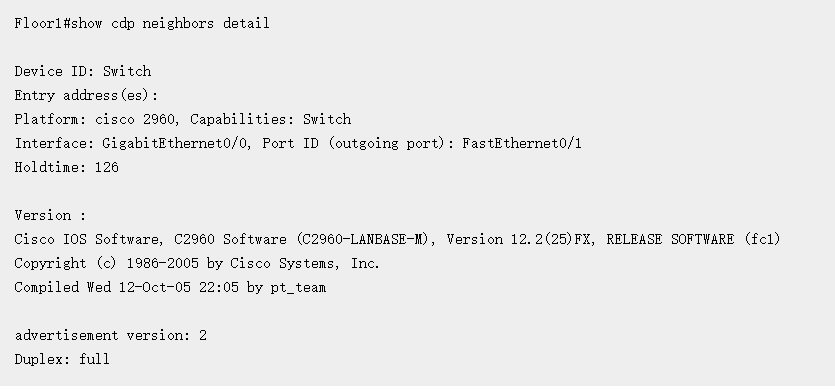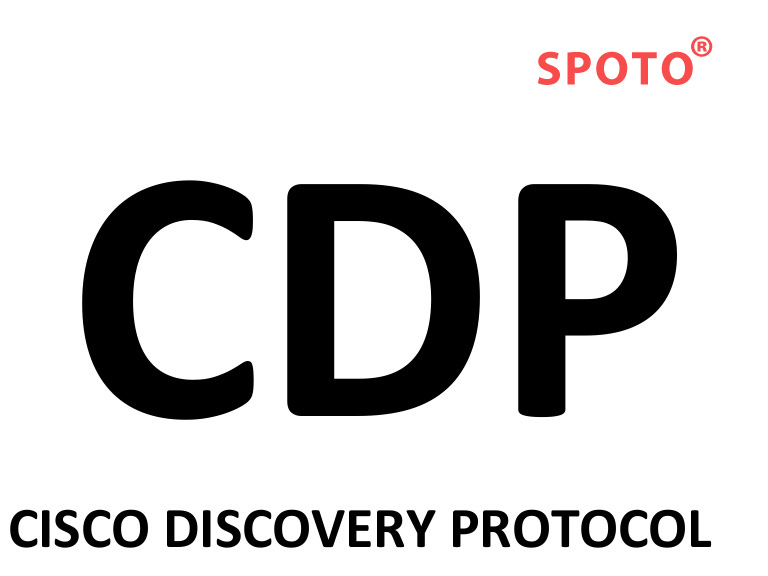CDP(Cisco Discovery Protocol)is a proprietary protocol developed by Cisco to discover information about locally connected Cisco devices. With CDP, administrators can collect hardware and protocol information about adjacent devices, which may be helpful in troubleshooting or documenting the network.
In order to discover information, the Cisco device sends CDP messages through each of its interfaces. These messages contain information about them, such as their hostname, network, and data-link addresses, device models, IOS versions, and so on.
To display information about the device directly connected, use the show CDP neighbor command:

As you can see from the example above, there is a directly connected device. This is a description of each field:
Device ID – the hostname of the directly connected device. In this case, the hostname is Switch.
Local Interface – the local interface on which the CDP messages were received (Gi0/0 in this case).
Holdtime – the amount of time the local device will hold the information before discarding it if no more CDP packets are received.
Capability – the capability of the directly connected device. The letter S indicates that the directly connected device is a switch. The letter R would indicate a router.
Platform – the model and OS-level running on the neighbor, 2960 series switch in this case.
Port ID – the neighbor device’s interface on which the CDP packets were sent, in this case, Fa0/1.
For more information about neighbors, use the show CDP neighbor detail command:

NOTE
IEEE has released a vendor-independent link-layer protocol, known as the Link Layer Discovery Protocol (LLDP), to replace CDP.
Notice that you can follow SPOTO if you want to know more knowledge about CCNA certification.
More Recommended Articles
1. Which is the Best Book for CCNA Preparation?
2. CCIE and CCNA Evolving Technologies Study Guide
3. What Is the Difference Between CCNA R&S and CCNA Security?

 Join Telegram Study Group ▷
Join Telegram Study Group ▷














